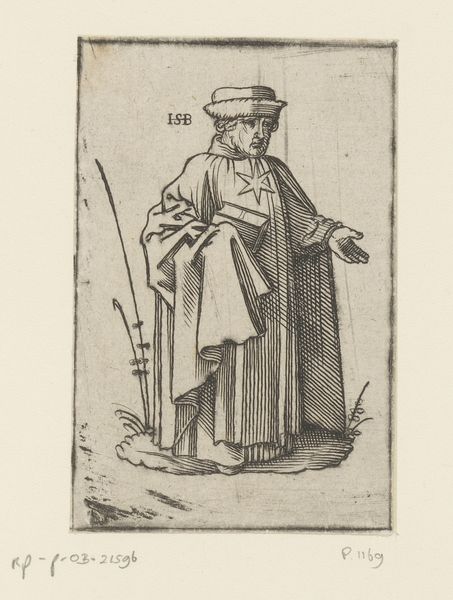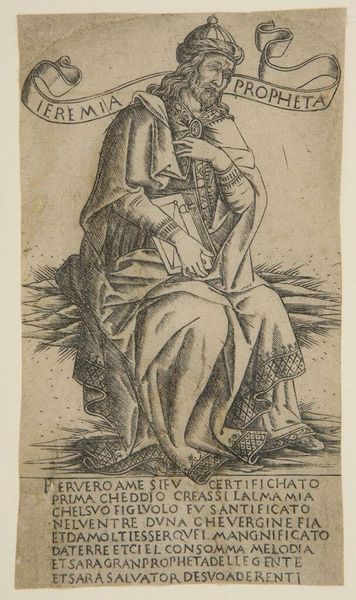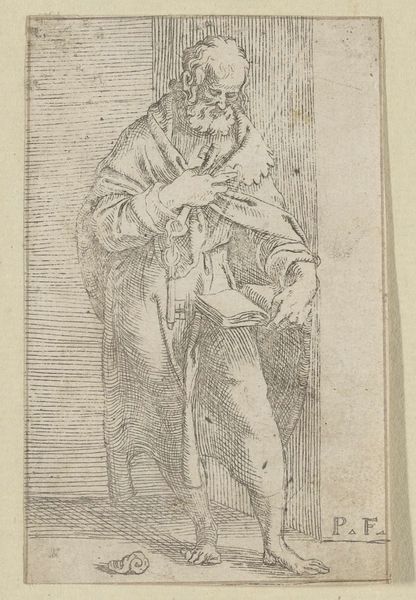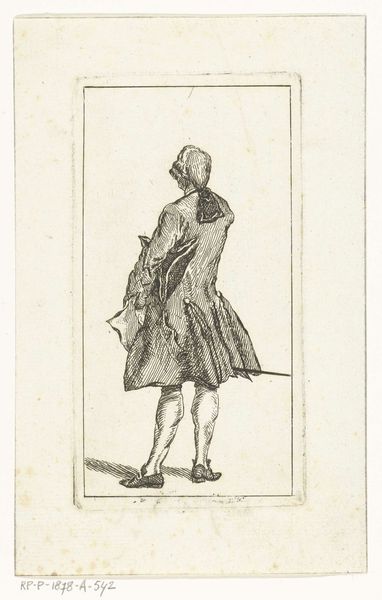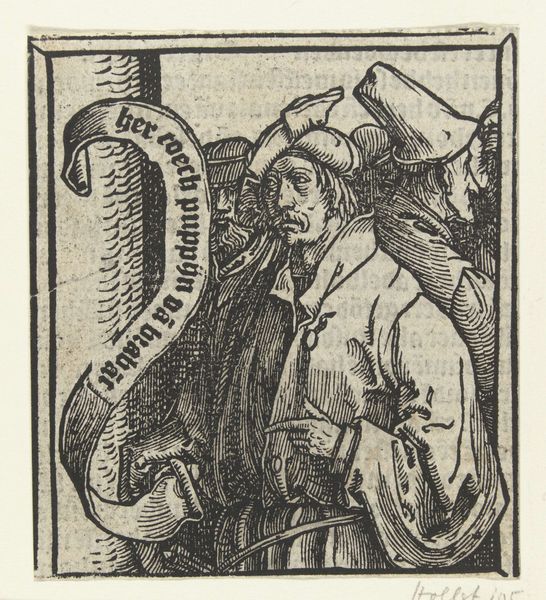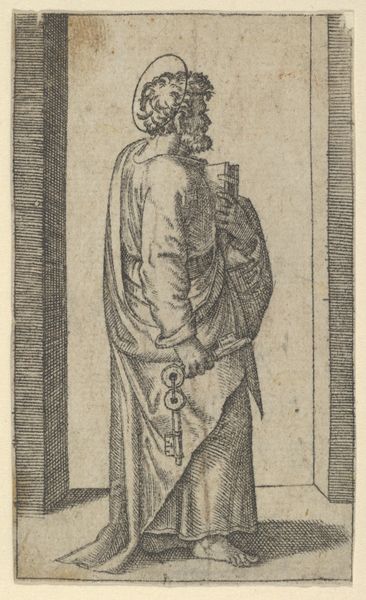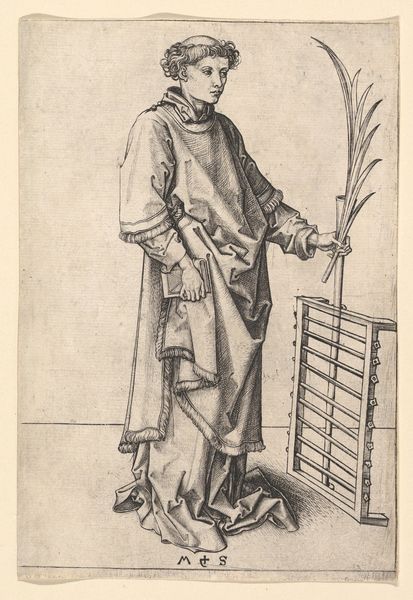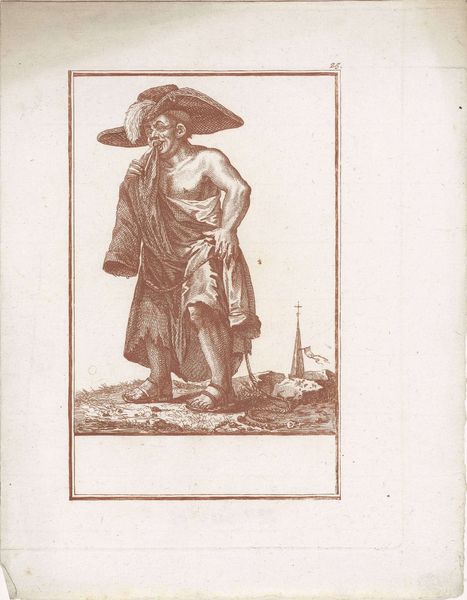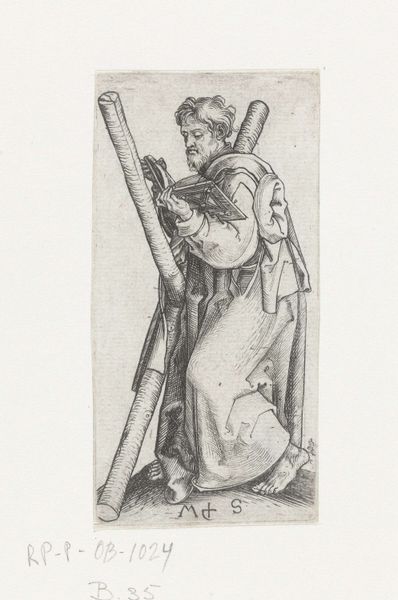
drawing, ink, pen, engraving
#
portrait
#
drawing
#
dutch-golden-age
#
pen illustration
#
old engraving style
#
ink
#
folk-art
#
pen-ink sketch
#
line
#
sketchbook drawing
#
pen
#
genre-painting
#
engraving
Dimensions: height 123 mm, width 78 mm
Copyright: Rijks Museum: Open Domain
Curator: Immediately striking, isn't it? This pen and ink drawing titled "Zittende boerenvrouw", which translates to "Seated Peasant Woman," attributed to Simon van de Passe, created sometime between 1605 and 1647. Editor: The linework creates a somber atmosphere, almost severe. The stark contrast emphasizes the weight of her posture. The form follows function, her simplified presentation almost feels like folk art. Curator: It's tempting to look closer at the material conditions behind this image. We can see this engraving embodies Dutch Golden Age artistry—created in multiples to widen access and availability, showing art and material culture circulating broadly. This woman isn't ennobled or idealized; it’s about daily labor represented with respect, even dignity. Editor: Indeed, although it doesn’t flinch from the reality of the woman’s social standing, its simple structural elements still make for an engrossing visual experience. Notice how the engraver created rhythm and movement using these clustered hatched marks suggesting the weight and feel of cloth. Curator: That emphasis on "feel" makes me wonder, what fabrics were accessible, and what sort of labour created this clothing she wears. Considering this as "genre painting", these images offered commentary on everyday realities for many. These images both create and participate in creating the symbolic capital in Dutch society, where industry and hard work was greatly rewarded and represented. Editor: Precisely. And this emphasis is key. The structural patterns of line direct our view— the sharp profile, downward glance, while diagonal marks articulate her body weight as she toils at an unknown task. The artist captures more than social type; we see, in formal terms, an evocative mood generated by those lines. Curator: Thinking of accessibility, engraving meant affordability; thus the image circulates wider and participates more dynamically within public perception, offering a vision of shared values, including a fascination and respect for this "common woman," one expressed by the marketplace around artwork. Editor: I appreciate how the analysis leads into many interesting and unexpected ways. This has led to considering what these graphic strategies might indicate beyond direct depictions. Curator: By shifting our approach from form to historical availability and the economics around image, the Dutch Golden age yields such fruitful insights!
Comments
No comments
Be the first to comment and join the conversation on the ultimate creative platform.

